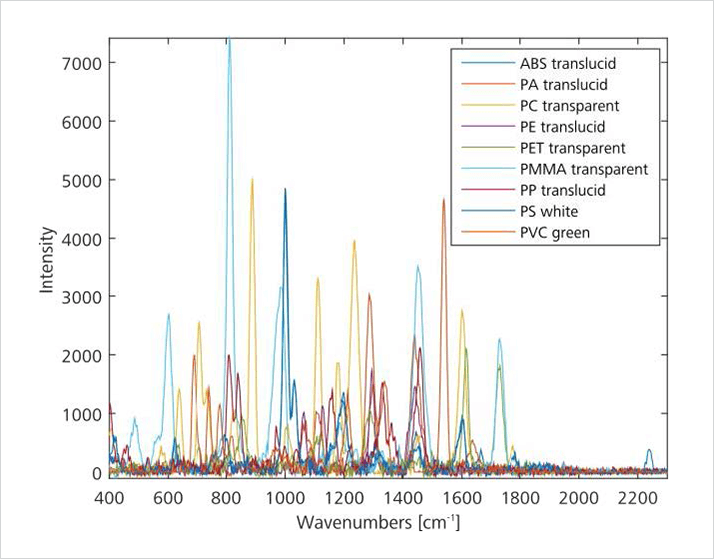Introduction
Today’s industry, but also daily life, cannot be imagined without polymers. Handheld Raman spectroscopy is uniquely suited for the identification of commonly used polymers, because evident results are obtained within seconds. Furthermore, because Raman analysis is nondestructive, later use or recycling of the sample remains unrestricted. In this study, a library of widespread polymers of different colors was built and subsequently used for the identification of unknown polymer samples.


Experimental
All spectra were measured using the Mira M-1 handheld Raman spectrometer in auto acquisition mode, i.e., integration times were determined automatically. A laser wavelength of 785 nm and the Orbital-Raster-Scan (ORS) technique were used. As many of the polymer samples were very thin, spectra were recorded with the point-and-shoot adapter which is suitable for a short working distance (SWD). An extensive collection of ABS (Acrylonitrile butadiene styrene), PA (Polyamide), PC (Polycarbonate), PE (Polyethylene), PP (Polypropylene), PS (Polystyrene), PET (Polyethylene terephthalate), PVC (Poly(vinyl chloride)), and PMMA (Poly(methyl methacrylate)) polymer standards and samples of different colors was used to build a comprehensive library with the Mira Cal software.
 Figure 1: Overlay of the spectra of selected polymer samples (plot made with MATLAB)
Figure 1: Overlay of the spectra of selected polymer samples (plot made with MATLAB)Results and discussion
For each polymer kind, one spectrum (i.e., one color) was chosen, and these spectra were superimposed. The overlay (figure 1) shows that each of the polymers has a unique spectrum that differentiates it from the other analyzed plastics. The spectral area containing the majority of peaks reaches from 600 to 1800 cm-1; proving that the spectral range of Mira M-1 is appropriate for the studied polymer samples.





